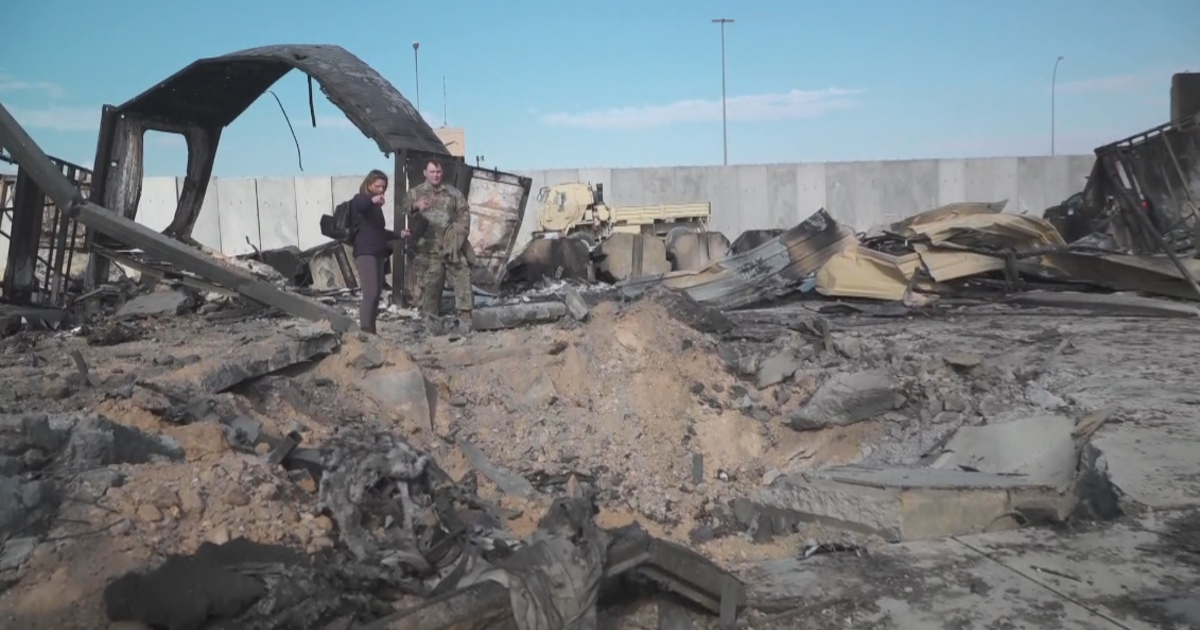When Iran launched a missile strike on the Al Asad Air Base in Iraq last week, U.S. troops hunkered down. The attack was in retaliation for the drone strike that killed Iran's top general, Qassem Soleimani.
Now, CBS News is getting a look at the aftermath. There are around 1,500 U.S. coalition troops on the Al Asad Air Base and they had just minutes to take cover. The shock waves rolled through the base's blast walls.
Sergeant Daine Kvasager told CBS News he was flying a drone that night, with orders to stay at his place and not take cover. He said he owes his life to the blast walls, known as T-walls.
"I'm very grateful for this piece of concrete and wrought iron steel," Kvasager said.
One of the missiles was a direct hit on Chief Warrant Officer Alexander Bender's living quarters. Bender showed CBS News what remains of the building. A fleece somehow survived, now scarred by shrapnel.

The U.S. troops hunkered down in bunkers that night, but most weren't designed to withstand a direct hit from a ballistic missile strike.
"We huddled together and held one another," said Senior Airman Mary Katherine Mulholland, who is on her first-ever tour of duty. "I still can't fathom that no one was hurt."
There's been speculation that Iran deliberately missed American troops in order to avoid further escalation with the United States, but a senior U.S. coalition military official told CBS News that's not true. The Iranians, in his words, were shooting to kill.
© 2020 CBS Interactive Inc. All Rights Reserved.
